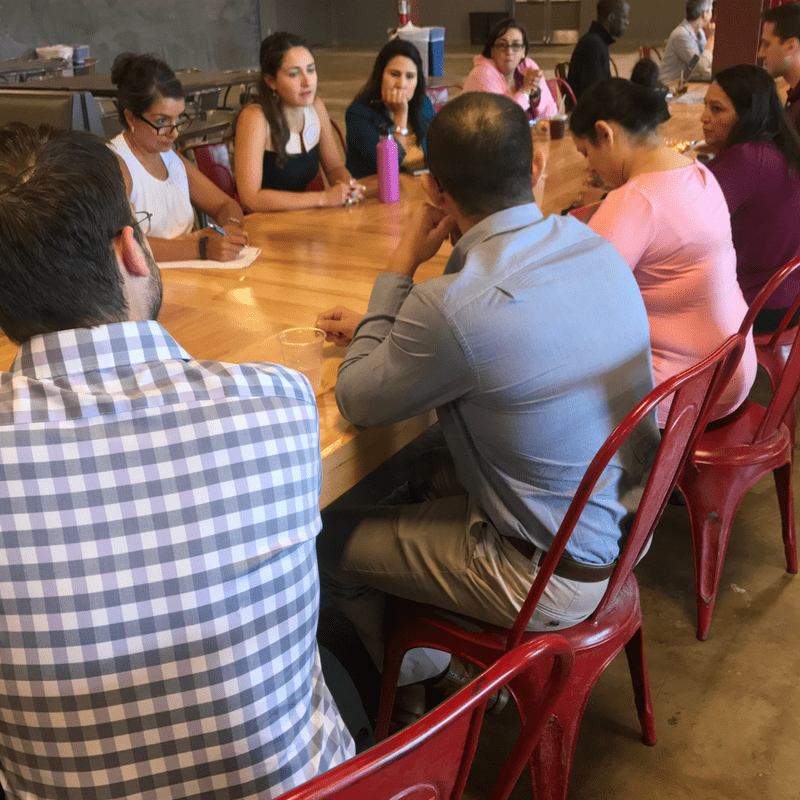SalesforceWhat is the #SalesforceOhana, and Why Does It Matter?
It was a privilege to join my Salesforce admin and developer friends on Sept. 21 for the annual San Antonio Salesforce User Group MVP Super Session. I was delighted to share Spanning’s “aha! moment” on the need for third-party data backup and restore with the diverse professionals in the session, and it was an honor […]
By
Lori Witzel
3 minute read
It was a privilege to join my Salesforce admin and developer friends on Sept. 21 for the annual San Antonio Salesforce User Group MVP Super Session. I was delighted to share Spanning’s “aha! moment” on the need for third-party data backup and restore with the diverse professionals in the session, and it was an honor to present alongside other Salesforce MVPs.Rather than focus on the specific Salesforce best practices covered, however, by the amazing Deepa Patel, Becky Webster, Brent Downey, and Nicole Alford, or the Circles of Success discussions—you can find all the sessions here if you log into the Salesforce Success Community—I want to “level up” the conversation.

Specifically, I want to share how one Salesforce User Group, the San Antonio Salesforce User Group, and its affiliated User Groups, the San Antonio Nonprofit User Group and San Antonio Salesforce Women in Tech, comprise a microcosm of the #SalesforceOhana, and what that means for traditionally underrepresented groups working in technology.
- What is the Salesforce Ohana? The #SalesforceOhana centers on the Salesforce platform and ecosystem, and includes Salesforce users, admins, developers, architects, partners, and employees. People in all those roles were in attendance at the San Antonio User Group (SA SFUG) MVP Super Session.
- What can happen when the Ohana meets up? One common outcome when the Ohana meets up–an increase in and shared knowledge about the Salesforce platform and its various use cases, much like we experience at Dreamforce. At the SA SFUG MVP Super Session, we dove into learning, via Deepa’s session on best practices in the use of Campaigns in Salesforce and Brent’s session on the hows and whys of migration from Classic to Lightning, and my session on use cases and best practices for data protection in Salesforce.
- What else can happen when the Ohana, in the form of a Salesforce User Group, meets? Mutual support; experienced admins and developers inspire and teach their less experienced peers, and all return to their own Salesforce orgs with more energy and new approaches. In addition, Salesforce User Groups are notable for an uncharacteristic-for-tech level of diversity in membership—women often make up a majority of a group, and there are significant numbers of Latinx and Black members and leaders.
- What makes the Salesforce Ohana such a supportive environment for those traditionally underrepresented in tech? I believe that support starts at the top, with Marc Benioff, CEO of Salesforce. His tangible support of the LGBTQ+ members of the Ohana; his driving adjustments to the salaries of women who work for Salesforce, to ensure parity with their male peers; and his appointment of a Chief Equality Officer, Tony Prophet, to extend Benioff’s vision for the Salesforce Ohana beyond diversity to equality; all underscore how much the leadership at Salesforce considers diversity and support for underrepresented groups a business advantage.
At the SA SFUG MVP Super Session, the diversity we see within the whole of the Ohana was reflected in the significant proportion of participants and leaders who were female, and / or who were Latinx. The Ohana microcosm reflects the macrocosm, and shows how Salesforce has fostered tech careers for many who’d never otherwise have found a supportive welcome in tech.
Request A Demo